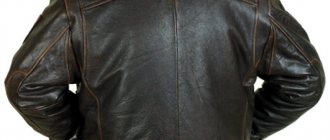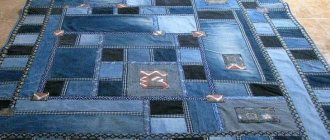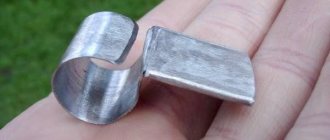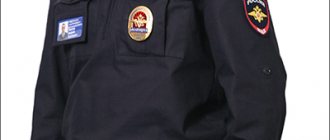Mastic for sculpting various figures for cakes is very popular today. We invite you to familiarize yourself with one very simple recipe and different figures as ideas for cakes.
Mastic began to be actively used in cooking not very long ago, but it quickly became popular. Today, each cake or pastry has begun to be decorated with different figures. This mass allows you to create real masterpieces, and therefore it is not surprising that confectioners love it so much.
What is mastic and is it difficult to work with?
Mastic
Mastic is a very thick mass, like plasticine. But you can still eat it. It is also important to note that mastic comes in different types.
The most famous at the moment are:
- Honey . This is the softest mass of all and is easy to sculpt from.
- Gelatinous . Characterized by rapid hardening and hardening
- Dairy _ It is used more often than others due to its low cost. Its main component is condensed milk. It can be used as a base coating for cakes and for sculpting small figures.
- Marzipan . It is usually used to cover cakes. Figures cannot be made from it because the mass is very soft
- Universal . This type is sold in candy stores. It is used for both modeling and coating. The taste is not even different from what you can cook yourself
- Floral . This mastic makes excellent jewelry, especially small details.
Each of the presented mastics is good in its own way, but in order to choose the most suitable one for yourself, you should try each of them and learn how to work with it.
What to look for when choosing
No matter what cake decorations are made from, truly beautiful decorative elements are obtained only from a high-quality product.
Today they use glaze - it is convenient with its fluid consistency, but its taste is not as bright as that of real chocolate - couverture.
Important! Chocolate must contain cocoa butter.
When choosing chocolate, you should pay attention to its composition, taste and fluidity. Four types of chocolate can be used for decoration:
- white;
- lactic;
- dark;
- bitter.
White chocolate
It does not include grated cocoa. A quality product contains at least 20% cocoa butter and at least 14% milk in dry form. Soy lecithin is used as an emulsifier, and vanilla is used as a natural flavoring.
Milk chocolate
Milk chocolate contains at least 33% cocoa butter. In addition, the composition includes milk powder, an emulsifier, sugar, and sometimes natural flavors. Real milk chocolate uses cocoa mass.
Bitter and dark chocolate
Dark and bitter chocolate has a very high cocoa content and does not contain milk powder.
Sugar mastic for sculpting figures at home: description, step-by-step recipe
Sugar mastic
Homemade mastic is very easy to make and we offer you one of the simplest recipes:
Mastic composition
Cooking method:
- Take a wide bowl and sift powdered sugar into it and add dry milk. Mix the ingredients and add condensed milk.
- Next we mix the future mastic like a regular dough. While you stir, gradually add lemon juice, cognac and coloring. As a result, you will get a pleasant thick mass that will feel pleasant on your hands and you can sculpt good figures from it.
Mastic has a huge advantage because it allows you to create beautiful figures of any size. In particular, it can be useful when you want to decorate a cake or pastries for a holiday.
Almond marzipan from children's fairy tales
Marzipan, often mentioned in Andersen's fairy tales, is another confectionery "play dough" made from powdered almonds and sweet syrup (or powdered sugar), with sugar making up more than one-third of the mass. Marzipan is a very elastic material from which you can sculpt complex shapes and fairy castles without adhesive additives. Real marzipan is made from almonds; if you add other nuts, the mass will lack plasticity. There is another secret to preparing this product - for 20-50 sweet almond kernels, take 1 bitter nut, which can be bought in specialized confectionery stores. This slight bitterness helps marzipan fully reveal its taste and aroma and gives it a special piquancy. If you can't find bitter almonds, you can replace them with a few drops of almond extract, bitter almond oil or almond liqueur. However, adding these ingredients to decorate the cake is not at all necessary. The absence of bitter notes will not reduce the plasticity of marzipan, it will simply not have that characteristic taste.
How to mold a toddler with mastic: step-by-step instructions
Mastic toddler
To create a toddler, it is better to make body mastic. This is done by adding the appropriate coloring agent during preparation.
Stage 1 . Roll into an oval shape like an egg. It is required for the body. Take a toothpick and make a hole for the belly button slightly below the center.
Stage 2 . Let's make the head. Roll a small ball. In this case, we take less amount of mastic than for the body. You need to insert a toothpick into the body, on which the head will rest.
- Make holes in the head for the eyes. Make a small nose. It should be flattened in size 4-5 mm. It would be enough
- We also draw the mouth and dimples from a smile with a toothpick.
- For the ears, make two small balls. Roll them up and make a couple of indentations in the center.
Stage 3 . Now secure the head to the body by placing it on a toothpick.
Stage 4 . Let's start sculpting the handles. For your hands, just take a little bit of mastic and roll the sausages first. Use a toothpick to draw fingers on one end.
Stage 5 . Attach your arms to your torso. If the parts do not stick together well, run a brush along the joints. Pre-moisten it with water.
Additionally, you can make some toys, flowers and other decorations for your baby’s hands.
How to make a little mouse from mastic: step-by-step instructions
For a mouse you will need yellow, green, white and pink mass. It is better to make the mouth and eyes from black beads, edible, of course. If you don't have black, then dark blue will do.
Mastic mouse
In addition, you will need tools such as a toothpick, a stack, a base mold and a knife.
Stage 1 . First we make the base. To do this, take the green mass and roll it into a 3 mm pancake. You can make a circle using a glass or glass.
Stage 2 . We make a gift. For this, yellow mastic is used. The most convenient way is to roll the ball and then turn it into a square.
Present
Next, roll out the pink mastic to 1-2 mm. Using a knife, cut into several strips. These will be gift ribbons. You will also need to tie a bow from them.
From what remains, make peas with a mold. They should not exceed 1-1.5 mm in diameter. Use a stack or a toothpick to secure them to the gift.
Stage 3 . Let's make a mouse. For the body we use white mastic. The body is made in the form of a drop. Use a toothpick to mark stripes for the fingers.
Mouse
- Now place toothpicks on both sides. Half pieces are suitable for the paws because they are small in size. We fasten the body and legs so that one is like a base and the other is in the air.
- We roll the ball onto the head and make a small notch a little below the center. Next we also cut out the mouth and eyes. Insert black beads and make a nose out of pink fondant.
- After this, we take two more small pieces and sculpt the ears. First we roll the balls, and then we make indentations in them. Flatten them well and remove the bottom part. Now attach them to your head.
Making the head
- The head is ready and now place it on the body. Again, use a toothpick to join.
- We make the upper legs like the lower ones, but only a little smaller. For the tail we roll a thin sausage, but it should become thinner towards one edge.
Stage 4 . Flower. The stem for the flower will be green. Its size is slightly larger than the height of a mouse.
- We make the bud pink. If you don’t want to bother making your own, you can use beautiful petal molds and then create a flower.
- Make indentations on the petals with a stack, and use a yellow piece for the middle. Now pin everything together and make a small green leaf.
Basics
I am often asked about which mastic is best to sculpt figures from. For some time I worked with both store-bought mastic, made according to various recipes, and with sugar paste, but I always returned to my recipe because I know how to adjust it to my needs.
Here I will not describe the process of making complex figures, but will simply try to talk in detail about how to make figures from mastic with your own hands. We will be making a person with relatively realistic body proportions and simple clothing. I am confident that anyone who follows these instructions will eventually learn how to create excellent fondant figures for a children's cake, and that this knowledge will help in the future when moving on to more complex working techniques and making figures with outstretched arms, as well as sculpting animals from mastic.
If you have any questions about how to sculpt figures from fondant, do not hesitate to ask them in the comments. I will try to answer them as quickly as possible, but please remember that I am a busy person, so don't expect immediate answers from me.
Remember that all this is not the ultimate truth, but just my own experiences, and you may have a different view on how to make figures from mastic for a cake. So there are no hard and fast rules here other than maybe the placement of parts, so adapt these tips to your needs and preferences.
Required materials and tools
In my work, I try to avoid unnecessary expensive tools and often use what I already have at home. I'll stick with that idea throughout this tutorial and try to keep the amount of what you need to make your sugar gummies to a minimum.
To make a simple figurine from mastic, you will need:
- Mastic of different colors for making the following parts: pants, boots, sweaters, leather, hair;
- A few toothpicks. Note: Do not give fondant products containing toothpicks to young children and be sure to warn everyone else that they contain toothpicks. You can substitute solid pasta if you wish, but let everyone know anyway;
- Salt shaker with powder or corn syrup, whichever you prefer. If you don't have a salt shaker, you can use a spoon instead;
- Cutting board (as smooth as possible);
- A sharp, non-corrugated knife;
- Small or medium ball shaped mastic tool;
- Small pastry brush;
- Water in a small container;
- Black food gel coloring;
- A surface on which you will place the figures, such as a cake or, if you are making them in advance, a piece of foam;
- Printed sketch of a person (see below).
Through trial and error, I realized that as I made figures from mastic, each subsequent piece turned out to be larger than the previous one, and as a result, I ended up with disproportionate mastic crafts. It was also difficult for me to make several figures of the same size if I did it by eye. For this reason, I began to use sketches similar to the one shown above and the figures for the mastic cake began to turn out to be the right size. Just upload this sketch to any graphic editor (I use Irfanview), set the desired height of the future figure and print the sketch. This approach can also be used when decorating a cake to figure out how to arrange the figures and what size they should be.
The height of the figure described in this article is 6.3 cm. Mastic is usually sticky, so to roll it out properly and avoid sticking to the board and fingers, sprinkle the work surface and hands with powdered sugar. Don't worry about getting powdered sugar all over the figure; you can easily clean it afterwards.
To glue pieces of mastic, apply a thin layer of water to one of them using a brush and press them together. You may need to move them around a little to get them to stick, but usually just water is enough to do this. Some people like to use different types of edible glue, either store-bought or homemade, but I usually don't bother with that. Water glues perfectly in almost all cases.
If you are working in a dry area, you may need to soften your mastic to prevent cracking on the surface. To do this, just mix a small amount of water into the dough and warm it in your hands. Try to do everything quickly so that the mastic does not have time to dry out and begin to crack. In high humidity conditions, you may need to stir in additional powdered sugar into the fondant and increase the time between steps to prevent the pieces from mixing.
Next, I will talk about how to sculpt with mastic and get excellent results.
mastikam.ru
A variety of techniques and materials are used to decorate and decorate cakes. One of the most common is mastic. A variety of figures, compositions, and inscriptions are made from it. What is mastic? If you come across this definition for the first time and see it on a cake, it’s hard to imagine how it was done. Mastic is an edible mass with astringent and adhesive properties, used for making decorations and decorating baked goods. From this article you will learn how to make it for a cake with your own hands at home.
Tips for making your own mastic
Culinary mastic is a pleasant material that helps make a real masterpiece out of a cake. Cooking it at home with your own hands has several secrets:
- Powdered sugar should be finely ground. If sugar crystals come across, the mastic will tear when rolling.
- Mastic is very sensitive to humidity. Therefore, so that it does not shine through, it is necessary to take care of the cake. Dry biscuits or butter cakes should be used as a base. The product should not be too soaked in syrup or liqueur. Cake with fondant should be stored in airtight boxes or plastic bags.
- If the mastic has cooled down and is difficult to roll out, then warm it up a little in the microwave to make it more plastic.
What utensils will you need?
To make cake mastic with your own hands at home, you need to prepare the dishes. To do this, you will need a container for mixing the components, which can be enameled, plastic, ceramic, or glass. To heat the mass in a microwave or oven, you should prepare a form made of porcelain or glass that is temperature-resistant. In addition, you will need a rolling pin, microwave, mixer, and a clean work surface.
Step-by-step recipes for making homemade mastic for decorating a cake
How to make mastic at home? The composition can be very different, but powdered sugar remains unchanged and the main component. There are many methods for preparing this material for a cake with your own hands at home, but the simplest is marshmallow paste. The finished mass is stored in the refrigerator, tightly wrapped in cling film. Before sculpting, it is slightly heated in the microwave or oven. The finished figures must be given time to dry.
Milk mastic
Milk mastic for cake is one of the most famous and popular types. Its color turns out to be a little yellowish. Milk mass at home is easy to make and convenient to use. Suitable for cake bases, creating small flowers and other figures. Required components:
- 350 g baby formula;
- 1 can of condensed milk;
- 350 g powdered sugar.
Step-by-step making of milk mastic for a cake with your own hands at home:
- Add all ingredients to the pan and mix.
- Knead until smooth and elastic.
- Form a ball and sprinkle with powder.
- Wrap the mastic in plastic wrap and leave for 30 minutes.
Marshmallow based mastic
How to make mastic from marshmallows? Preparing this type of plastic mass is not difficult. The number of components given in the recipe is enough to completely cover the product and sculpt several figures. It is better to choose plain marshmallows.
Required ingredients:
- marshmallows – 200 g;
- powdered sugar – 500 g.
Step-by-step master class of marshmallow-based cake mixture with your own hands at home:
- Place the marshmallows inside a container to heat in the microwave. If you don’t have such a device, heat it in a water bath. Add a piece of butter. Set for 40 seconds or more until the volume of the base doubles.
- Sift the powdered sugar in portions and mix the mastic with a spoon. If you want to make it colored, add dye right away.
- When mixing with a spoon becomes difficult, sprinkle the table with powder and knead with your hands. This process takes a long time, since there should be no air bubbles in the mass.
- When the mastic stops sticking, wrap it in cling film and leave for half an hour. After this, you need to knead it, rolling it out with a rolling pin.
- You can store the mixture in the refrigerator for up to three months. Before use, it must be heated in the microwave, kneaded with the addition of powdered sugar.
Chocolate mastic recipe
The consistency of chocolate mastic resembles plasticine. It allows you to make different figures that will have a pleasant brown color and taste. Chocolate for mastic must be chosen milk, white, bitter, depending on the result you want to get.
Required ingredients:
- water – 3 tsp;
- powdered sugar – 200 g;
- chocolate – 100 g;
- marshmallow – 150 g;
- butter;
- potato starch.
Step-by-step recipe for DIY chocolate cake mixture at home:
- Place the marshmallows inside the container and add two teaspoons of water. Mix chocolate with a teaspoon of butter and tsp. water.
- Heat the marshmallows in the microwave until they expand. Melt the chocolate there and grind it so that there are no pieces.
- Mix marshmallows with sifted powdered sugar and add chocolate. Mix the mixture until smooth.
- Beat with a mixer fitted with spiral attachments.
- Sprinkle with starch and knead until soft and elastic.
- Wrap the mastic in film and let it sit for half an hour.
Recipe for mastic made from powdered sugar and gelatin
This recipe is considered one of the most successful ways to make mastic for a cake with your own hands at home. The mass turns out to be white, soft, easy to roll out in a thin layer, universal (suitable for sculpting flowers, figures, covering). You can store the mastic at room temperature, but before use it must be heated in the microwave.
Required components:
- gelatin – 25 g;
- cold water – 1 glass;
- sugar – 2 cups;
- invert syrup – 170 ml;
- powdered sugar – 1.2 kg;
- starch – 300 g;
- salt – 0.25 tsp.
Step-by-step recipe for making cake mastic with your own hands at home:
- First we will deal with invert syrup. It replaces molasses, maple syrup, liquid honey, and confectionery glucose. To prepare it, put a saucepan with 700 g of sugar and 300 ml of hot water on low heat. Bring to a boil with constant stirring. Add 4 g of citric acid, stir, cover with a lid, and cook for 30 minutes over low heat. Remove the lid and let the syrup cool for 15 minutes. Add 3 g of soda, after which abundant foaming should begin. Stir the syrup with a spoon several times at intervals of 10-15 minutes to remove the foam. Set aside 170 ml of syrup for the mastic, store the rest in the refrigerator.
- For mastic, pour gelatin with half a glass of water. We prepare it as indicated on the package. Once ready, strain so that there are no grains.
- Mix the remaining water, salt, sugar, invert syrup. Place on low heat and bring to a boil while stirring constantly.
- When the mixture boils, reduce the heat and simmer for 8 minutes, but there is no need to stir.
- Turn on the mixer and pour the boiling mixture into the gelatin. Beat at maximum speed.
- It is necessary to beat for a long time so that the mass increases three times. It should become uniform, fluffy, white, shiny and curl into the corollas.
- Then we change the nozzles to spiral ones. Sift through the powder and add in several additions. We continue to beat.
- When the snow-white dense mass is ready. Cover the container with mastic with cling film and leave for a day at room temperature. Then knead on a table sprinkled with starch.
Marzipan mastic
Marzipan mastic comes out smooth and elastic. It is used to completely cover the surface of pies and cakes. Less commonly used for sculpting flowers, fruits, and other figures. Required ingredients:
- sugar – 1 glass;
- almonds – 1 cup;
- powdered sugar;
- cocoa powder – 1 tbsp. l.;
- almond essence – 3 drops;
- water – 0.25 cups.
Step-by-step recipe for do-it-yourself marzipan cake mixture at home:
- Without peeling, place the almonds in boiling water, boil for a couple of minutes, and transfer to a colander. When all the water has drained, pour the almonds onto the board. Remove the shell, wash the kernels, fry in a dry frying pan for 15 minutes with constant stirring. Grind the nuts in a blender until pureed.
- Mix sugar with water, heat until the syrup dissolves and thickens so that it rolls into a flexible, hard ball.
- Mix syrup with almonds. Warm up for 4 minutes. Pour in the essence.
- Sprinkle the board with powder, spread the mastic and knead.
Protein-rice mass
This type of mastic is considered very common. Judging by the reviews, it is used to form small patterns, use for cornets or the smallest nozzle. What is the protein-rice mixture made from? Its peculiarity is the addition of protein and lemon juice. Required components:
- powdered sugar – 200-220 g;
- lemon juice – 1 tsp;
- protein – 1 pc.
Step-by-step production of protein mixture for a cake with your own hands at home:
- Transfer the whites into a container. Beat it a little with lemon juice.
- Gradually stir in the sifted powder in batches.
- The mass should flow slightly from the spatula, but not be liquid.
Floral
Do-it-yourself floral mastic for a cake at home is a unique type of mass that perfectly retains its given shape, hardens in a short period of time, and is easy to mold. Required components:
- cold water – 30 ml;
- powdered sugar – 250 g;
- liquid glucose – 1 tsp;
- gelatin – 2 tsp.
Step-by-step preparation of flower mass with your own hands at home:
- Pour water into a small bowl, add gelatin, leave for 10 minutes. Then heat until dissolved in a water bath.
- Mix glucose into gelatin and mix.
- Gradually add sifted powdered sugar in portions.
- Place the thick mastic on a surface sprinkled with powder and knead until the stickiness disappears. Wrap it in film and let it sit for half an hour.
How to properly make mastic colored or shiny
Mastic is very popular for decorating cakes, sculpting figures, and covering. It is a white plastic mass. In order for the decorations to be original and bright, the material must be painted. For this, food dyes are used, which can be liquid, dry or gel. Mastic coloring can occur in several ways:
- Liquid dye or gel is added during the preparation of mastic. The color comes out even, which does not require additional kneading of the material. To get multi-colored mastic, you need to add several colors.
- When the mastic is ready, you can color it like this: dip a damp toothpick in dry dye, stick a ball of plastic mass. Then mix thoroughly until the color is uniform.
- Dilute the dry dye with boiled water, alcohol or vodka in a ratio of 1 tablespoon of liquid per tip of a powder knife. Dip a toothpick in the dye, pierce the mastic in several places, and knead.
- To create a marble effect, apply a few drops of coloring, roll into a sausage, fold the edges towards the middle, add more color. Repeat this pattern until you achieve the desired striped and streaked color.
What to do if you only have a few colors and don’t have the right shade? Then you should know about the rules of combination:
- light green – yellow and purple;
- green - blue and yellow;
- khaki – green, brown;
- lavender – lilac, blue;
- blue – yellow, orange, green;
- purple – blue, red;
- strawberry – red, pink;
- mint – green, blue, white;
- pearlescent - add kandurin;
- champagne – white, yellow, brown;
- dark red – a little black and red;
- orange – yellow, red;
- gold – orange, yellow, red;
- coral – yellow, pink;
- terracotta – brown, orange;
- brown – green, red;
- flesh – yellow, red;
- black – red, blue, brown in proportions 1:1:1.
- gray - red, blue, brown, select the proportions yourself until you get the desired shade.
If you haven’t stocked up on food coloring, then herbal ingredients will come to the rescue:
- yellow – carrot juice, turmeric powder, saffron, diluted in alcohol, water;
- pink and red – cranberry, beetroot, pomegranate, currant, cherry juice, red wine;
- orange – orange juice;
- green – juice of spinach, parsley, sorrel, brilliant greens;
- purple – juice of grapes, blackberries, blueberries;
- chocolate – cocoa powder;
- black – activated carbon.
Another common question when working with mastic is how to make it shiny? When the cake is decorated with this plastic mass, you need to prepare a solution of vodka and honey in a 1:1 ratio. Cover the mastic with the vodka-honey mixture using a soft brush. After a few minutes, the vodka will begin to evaporate, then the decoration will receive a glossy, beautiful shine.
Video tutorials: how to make mastic for a cake at home
Mastic is a product that allows you to sculpt figures as if from plasticine. However, this smooth and tasty material dries out quickly when outdoors. There are many recipes for plastic mass based on different products, which you will learn about in the videos below for beginners. This option for decorating a birthday cake with your own hands at home will surprise all guests. This special paste is intended for modeling confectionery products, creating various decorations, and giving baked goods a more aesthetic appearance.
Homemade honey mastic
Marshmallow mastic recipe
Source
podruzhkablog.ru
How to make a lion cub from mastic: step-by-step instructions
Lion cub
For the lion cub you will need yellow, white, brown and black mastic.
Stage 1 . Make a ball for the head, and the body will be teardrop-shaped.
- We also need to make white inserts for the body. They are also made like droplets.
Head and torso
- Make a mouth out of white fondant and spread the fondant in a stack for a better look.
- All that remains is to make the eyes and sculpt round shapes near the mouth.
Stage 2 . The paws will be two-colored - white and yellow. Yellow is the main color and white is used for the fingers. Don't forget to separate your fingers.
- Insert large white parts into the eye recesses, and then slightly smaller ones. At the end we put black eyes. We make the nose brown in the shape of a triangle.
Making a lion
- Finally, mold the ears in the form of flattened circles, and there is also a tail missing. It is made in the shape of a sausage, and there will be a brown brush at the tip.
Stage 3 . The mane will also be brown. You need to make it with petals and then secure them around your head.
- If you haven’t run out of white mastic, use it to make pebbles for the lion. It turns out that he seems to be sitting on them. And from green you can make grass.
How to make a panda from mastic: step-by-step instructions
The panda is made from white and black fondant, you don't need any other colors.
Mastic panda
Stage 1 . Make a small ball - this will be the head. We make slits in it for the eyes and immediately roll out black balls for them. If necessary, the recesses can be expanded with a stack. They must be completely closed.
Making the head
- All that remains is to finish the nose - roll it out of black mastic too and make a couple of holes.
Stage 2 . From small pieces we roll out eyes and ears.
- The body has two parts. The first is made from white and a round blank, and the second is elongated and black. Fastening is done with toothpicks.
Eyes and ears
Stage 3 . The paws are made in the form of droplets of black mastic. You can also make pads on them, but in white.
Which mastic should a novice master choose?
Modeling decorations from mastic with your own hands can be quite a difficult task for novice craftsmen. Therefore, at first, to improve your skills more easily and quickly, you should opt for purchased rather than homemade mastic. The first one is more expensive. But to create flowers and figures you need to gain a certain skill, which is much easier to do with purchased mastic. In stores you can find a wide variety of manufacturing companies, and the price of the product will vary from this. Russian brands can be found for 250 rubles/kg, imported ones (Italy, Sweden) – 500 rubles/kg. For a novice master, I would like to recommend mastic for modeling. It is universal, suitable for covering a cake, and for creating figures and not very complex colors.
How to make an airplane out of mastic: step-by-step instructions
Airplane made of mastic
To make an airplane, you need to prepare blue and white mastic. Don't forget about additional tools.
Stage 1 . Make a white body of the airplane; it will look a little like a trapezoid. We sculpt the front glass from blue mastic and attach it to the front.
Stage 2 . Now let's make the wings. To do this, take a couple of balls, roll them out or knead them. Make the wings in the form of triangles. We make the tail a little thinner and also like a trapezoid.
Stage 3 . Now make blue stripes on all parts of the airplane.
Stage 4 . Next we sculpt black and white eyes. The mouth can be drawn with a toothpick or a stack.
How to use mastic for modeling: useful tips
Sometimes it happens that even if you follow the instructions, not everything works out as it should. Each craftswoman has some secrets to make modeling more effective:
- In some situations, it is very difficult to completely cover a cake with fondant in a neat manner. Folds appear on the sides, which can ruin the whole job. You can solve the problem if you roll it out so that you get a small margin.
- After this, the mastic is laid out on the cake and its weight forces it to lie correctly.
- The black dye is considered very rare. To remedy the situation, you can take three colors - blue, yellow and red. They are mixed in a ratio of 2:1:1. You can also try adding blue dye to brown paint.
To obtain a shiny mastic, lubricate the surface with vodka and honey. Both components are added in the same quantity. The resulting liquid lubricates the surface and after drying it becomes shiny.
"Lace" decor
For this type of design you will need an already covered cake and additional materials: for example, cutters. Cutter is a form for cutting dough or mastic, they come in different shapes: from simple, large and round, to complex and small. The lace mastic should be a little denser and hold its shape well.
Roll out the mass on a board greased or sprinkled with starch until a layer of 3-4 mm is reached and cut it to the height of the side of the cake. Inside the resulting rectangle, start cutting out “lace” with cutters, for example, flowers. The combination of colored covering with white lace along the side looks very beautiful. Once the design is cut out, all that remains is to carefully separate the fondant from the board and smooth it onto the side of the cake. Pieces of cut out decor can be used to decorate the top of your confectionery masterpiece!










